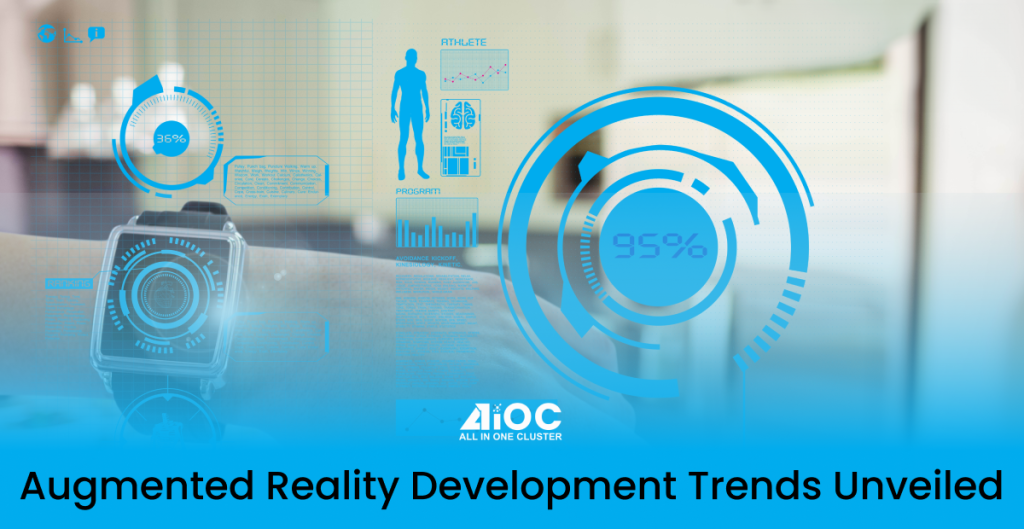In the realm of technology, few innovations have garnered as much attention and excitement as augmented reality (AR). From enhancing gaming experiences to revolutionizing industries like healthcare and retail, AR has emerged as a transformative force in the digital landscape. As developers continue to push the boundaries of what’s possible, it’s essential to stay abreast of the latest trends shaping the Augmented Reality Development landscape. In this comprehensive guide, we’ll delve into the intricacies of AR development trends, uncovering insights that promise to shape the future of this dynamic field.
Understanding the Evolution of AR
Before delving into the latest trends, it’s crucial to grasp the evolution of augmented reality. AR traces its roots back to the 1960s, with early experiments laying the groundwork for future advancements. However, it wasn’t until the advent of smartphones and wearable devices that AR gained widespread recognition. Today, AR technology encompasses a diverse array of applications, ranging from interactive advertising to immersive training simulations.
The Rise of AR Development Platforms
One of the most significant trends in AR development is the proliferation of AR platforms. These platforms provide developers with the tools and resources needed to create compelling AR experiences without the need for extensive coding knowledge.
Embracing Web-Based AR
Another trend that’s gaining momentum is the adoption of web-based AR experiences. Traditionally, AR applications were confined to native mobile apps, requiring users to download and install software onto their devices. However, with the advent of WebAR technology, users can access AR content directly through their web browsers, eliminating the need for additional downloads. This shift towards web-based AR promises to unlock new possibilities for immersive storytelling and interactive experiences.
Integration of Artificial Intelligence
Artificial intelligence (AI) is playing an increasingly integral role in AR. By leveraging AI algorithms, developers can enhance AR experiences with features such as real-time object recognition, natural language processing, and predictive analytics. This integration of AI not only enhances the realism of AR content but also opens up new avenues for personalization and user engagement.
The Emergence of Spatial Computing
Spatial computing is poised to revolutionize the way we interact with AR content. Unlike traditional AR experiences, which are limited to static overlays, spatial computing enables dynamic interactions within physical environments. This technology leverages advanced sensors and computer vision algorithms to map and understand the user’s surroundings, allowing for more immersive and contextually relevant AR experiences.
Enhanced Collaboration and Social Sharing
Collaboration and social sharing are becoming increasingly prevalent features in AR applications. Developers are incorporating features that allow users to collaborate in real-time, whether it’s co-creating virtual prototypes or engaging in multiplayer gaming experiences. Additionally, social sharing functionalities enable users to easily capture and share their AR experiences with friends and followers, fostering a sense of community and connectedness.
The Importance of User Privacy and Data Security
As AR technology becomes more ubiquitous, ensuring user privacy and data security is paramount. Developers must prioritize the implementation of robust privacy measures, such as data encryption and user consent mechanisms, to safeguard sensitive information. By adopting a privacy-first approach, developers can build trust with users and mitigate the risks associated with data breaches and misuse.
Challenges and Opportunities Ahead
While the future of AR development is brimming with promise, it’s not without its challenges. From technical hurdles to ethical considerations, developers must navigate a complex landscape fraught with potential pitfalls. However, with these challenges come opportunities for innovation and growth. By staying attuned to emerging trends and embracing a spirit of experimentation, developers can harness the full potential of AR technology and usher in a new era of immersive experiences.
Conclusion
In conclusion, the field of augmented reality development is undergoing rapid evolution, driven by a convergence of technological advancements and shifting consumer behaviors. From the rise of AR development platforms to the integration of artificial intelligence and spatial computing, the possibilities for innovation are virtually limitless. By staying abreast of the latest trends and embracing a collaborative mindset, developers can unlock new opportunities and shape the future of AR development for years to come. So, whether you’re a seasoned developer or an aspiring creator, now is the time to embark on your AR journey and join the ranks of innovators shaping the digital landscape. AR is here to stay, and the future looks brighter than ever.
